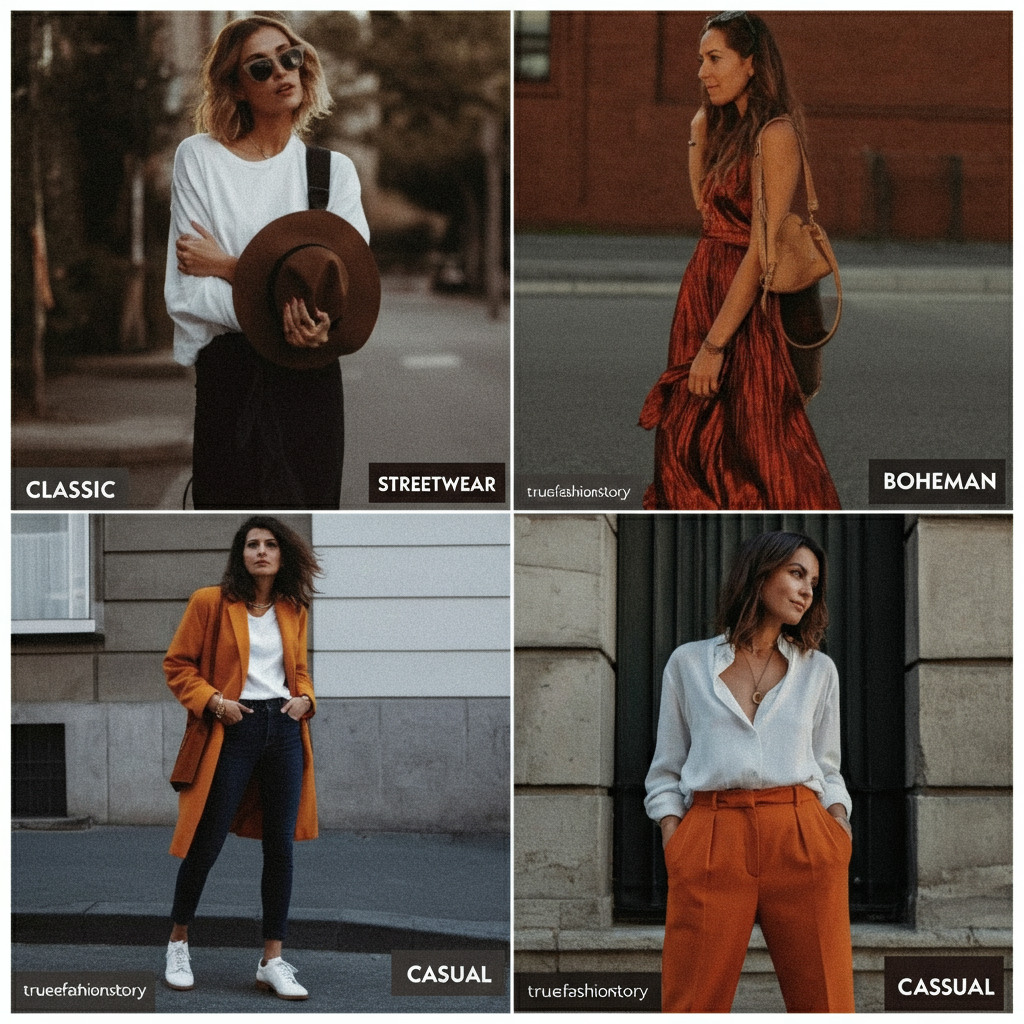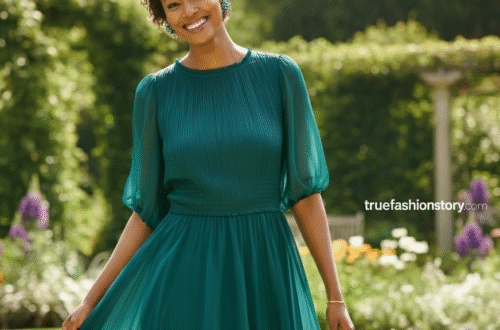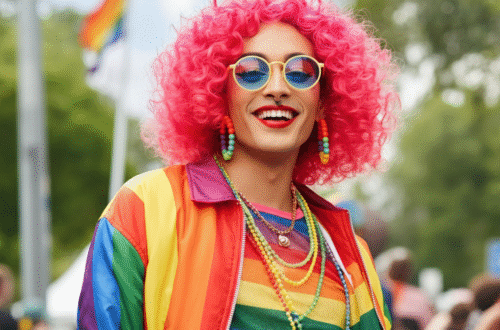Ever looked in your closet and felt like you had nothing to wear, even though it’s full of clothes? Finding your personal style can feel like a big puzzle. With so many trends and aesthetics out there, it’s easy to get lost. But understanding the major types of fashion styles is the first step to building a wardrobe you truly love. This guide will walk you through the most popular styles, helping you identify what resonates with you and how to start curating your unique look.
Think of your style as a form of self-expression. It’s how you introduce yourself to the world without saying a word. Are you laid-back and casual, bold and artistic, or polished and professional? Let’s explore the diverse world of fashion to find your perfect fit.
Key Takeaways
- Style is Personal: Your fashion sense is a unique reflection of your personality, lifestyle, and preferences.
- Core Styles: Most aesthetics fall into broader categories like Casual, Classic, Bohemian, and Streetwear.
- Mix and Match: You don’t have to stick to one style. The most interesting looks often come from blending elements of different aesthetics.
- Discover Your Vibe: Experimenting is key. Try new combinations to discover what makes you feel confident and comfortable.
Understanding the Core Fashion Aesthetics
Before we dive into specific looks, it’s helpful to understand the main categories that most styles branch from. These are the foundational pillars of fashion, each with its own philosophy and key pieces.
Classic Style: Timeless and Elegant
Classic style is all about timeless elegance. It focuses on clean lines, simple silhouettes, and high-quality pieces that never go out of style. Think of iconic figures like Audrey Hepburn or Grace Kelly. This aesthetic avoids flashy trends in favor of sophisticated staples that can be worn for years. The color palette is often neutral, featuring black, white, navy, beige, and gray.
A classic wardrobe is built on investment pieces like a well-tailored blazer, a crisp white button-down shirt, a simple black dress (the LBD), and tailored trousers. The key is in the fit and fabric. Everything should look like it was made for you. Accessories are minimal and refined—a simple gold chain, a leather handbag, or a pair of pearl earrings are all you need to complete the look. It’s a style that says “effortlessly chic” and is perfect for professional settings or anyone who values longevity in their wardrobe.
Casual Style: Comfort Meets Fashion
Casual style is perhaps the most popular and relatable of all the types of fashion styles. It prioritizes comfort and practicality without sacrificing style. This is your everyday look—what you wear to grab coffee, run errands, or hang out with friends. The foundation of casual wear includes essentials like t-shirts, jeans, sweaters, and sneakers.
However, casual doesn’t mean sloppy. A well-put-together casual outfit looks intentional. It’s about choosing comfortable pieces that fit well and can be easily mixed and matched. Think of a great-fitting pair of dark-wash jeans paired with a soft cotton tee and a stylish jacket. Athleisure, a sub-genre of casual, has become extremely popular, blending athletic wear like leggings and hoodies into everyday outfits. This style is accessible, functional, and perfect for a relaxed, on-the-go lifestyle.
Bohemian (Boho) Style: Free-Spirited and Earthy
The Bohemian or “Boho” style is inspired by the free-spirited, artistic lifestyles of the 1960s and 70s. It’s an earthy, romantic, and unconventional look that celebrates nature and individuality. Key elements include flowing maxi dresses, floral prints, fringe details, crochet, and natural fabrics like cotton, linen, and suede. The silhouette is often relaxed and unstructured, emphasizing comfort and movement.
Boho style is rich in texture and detail. You’ll see a lot of embroidery, patchwork, and eclectic patterns. Accessories are a huge part of the look, with layered necklaces, stacked bracelets, wide-brimmed hats, and ankle boots being common choices. The color palette is warm and earthy, featuring shades of brown, rust, mustard, and olive green. It’s a style that feels creative, adventurous, and deeply connected to a sense of freedom. For more inspiration on building a unique wardrobe, check out the truefashionstory.comBlog.
Streetwear Style: Urban and Trend-Driven
Streetwear is a fashion style that was born from skate and surf culture in California and has since exploded into a global phenomenon. It is heavily influenced by hip-hop music, urban life, and modern art. This style is all about comfortable, casual pieces with a high-fashion, trend-driven edge. Think graphic tees, hoodies, sneakers, baseball caps, and baggy pants.
What sets streetwear apart is its focus on logos, branding, and exclusive “drops.” Limited-edition collaborations between brands and artists create a sense of hype and collectibility. Sneakers, in particular, are a cornerstone of streetwear culture, with enthusiasts collecting rare and iconic models. The style is bold, expressive, and constantly evolving. It’s a way for people to show their allegiance to certain brands, artists, or subcultures while staying on the cutting edge of fashion.
Diving Deeper: Exploring More Fashion Styles
Beyond the main categories, countless sub-styles and aesthetics have emerged. Here are a few more popular types of fashion styles you should know.
Artsy Style
The artsy style is for the bold and creative. It defies conventional fashion rules and uses clothing as a canvas for self-expression. An artsy individual might wear a handmade piece, a vintage find with a unique story, or clothing with bold, abstract prints.
Grunge Style
Originating in the 90s music scene, grunge is characterized by a “don’t care” attitude. Think ripped jeans, flannel shirts, band tees, combat boots, and oversized silhouettes. The look is intentionally messy and anti-conformist.
Preppy Style
Inspired by the attire of American Ivy League university students, preppy style is clean, classic, and collegiate. Key items include polo shirts, chino pants, crewneck sweaters, boat shoes, and blazers, often in nautical colors like navy, white, and red.
Minimalist Style
Minimalism is about “less is more.” It uses a simple, neutral color palette and focuses on clean lines and simple shapes. A minimalist wardrobe is highly curated with only essential, high-quality pieces, avoiding any unnecessary frills or patterns.
Style Comparison: Streetwear vs. Classic
|
Feature |
Streetwear Style |
Classic Style |
|---|---|---|
|
Core Philosophy |
Trend-driven, urban, and expressive |
Timeless, elegant, and sophisticated |
|
Key Pieces |
Graphic hoodies, sneakers, baggy jeans, logo tees |
Tailored blazers, LBD, crisp shirts, trousers |
|
Color Palette |
Bold and varied, often with graphic prints |
Neutral (black, white, navy, beige) |
|
Influences |
Hip-hop, skate culture, modern art |
Old Hollywood, professional attire, royalty |
|
Accessories |
Baseball caps, chunky chains, statement sneakers |
Simple jewelry, leather handbag, silk scarf |
|
Vibe |
Edgy, casual, and current |
Polished, refined, and enduring |
How to Find Your Personal Fashion Style
Discovering your personal style is a journey, not a destination. It’s about experimenting and learning what makes you feel like the best version of yourself.
Step 1: Seek Inspiration
Start by looking for inspiration. Create a mood board on Pinterest or save posts on Instagram. Look at fashion blogs, magazines, and even people you see on the street. Don’t limit yourself to one look. Collect images of outfits that you are drawn to, even if you’re not sure why. After a while, you’ll start to see patterns emerge—a specific color, silhouette, or overall vibe that you consistently love.
Step 2: Analyze Your Closet
Look at what you already own. What are the pieces you wear over and over again? What makes you feel comfortable and confident? These are clues to your authentic style. Also, take note of the “wardrobe orphans”—the items you bought but never wear. Ask yourself why you don’t wear them. Is the fit wrong? Is the color not right for you? This analysis helps you understand your shopping habits and avoid future mistakes.
Step 3: Experiment and Play
Don’t be afraid to try new things. Step out of your comfort zone and experiment with one of the types of fashion styles that intrigues you. You don’t have to overhaul your entire wardrobe at once. Start small by adding a new accessory or trying a different color combination. Thrifting is a great, low-cost way to play with different styles without a big commitment. The goal is to have fun and see what sticks.
Frequently Asked Questions (FAQ)
Q: Can I have more than one fashion style?
A: Absolutely! Most people are a blend of two or more styles. You might be classic-preppy for work and bohemian-casual on the weekends. Combining elements from different styles is what makes your personal look unique.
Q: How do I build a wardrobe for a specific style?
A: Start with the basics. Identify 5-10 core pieces that define the style you’re aiming for. For a classic style, this might be a blazer, white shirt, and tailored pants. For streetwear, it could be a quality hoodie, dark jeans, and iconic sneakers. Build your wardrobe around these staples.
Q: How can I stay stylish on a budget?
A: You don’t need a lot of money to be stylish. Focus on quality over quantity, shop at thrift stores for unique finds, and learn how to care for your clothes so they last longer. Also, master the art of accessorizing—a great bag or a cool pair of earrings can elevate even a simple outfit.
Conclusion
Understanding the different types of fashion styles is your roadmap to building a wardrobe that is a true reflection of you. From timeless classic pieces to edgy streetwear, each style offers a different way to express yourself. Remember that style is not about following rigid rules; it’s about discovering what makes you feel confident, comfortable, and authentic. Take the time to explore, experiment, and curate a look that tells your unique story. Your perfect style is out there waiting for you to find it.





